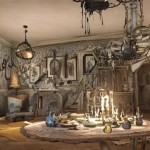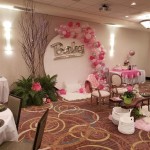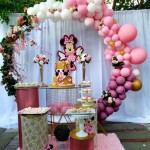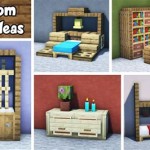Children's Bedroom Decor Ideas: Creating a Space for Growth and Imagination
A child's bedroom is more than just a place to sleep; it is a sanctuary, a playground, and a space for burgeoning creativity. Decorating a children's bedroom requires careful consideration, balancing functionality with aesthetic appeal and ensuring the room fosters a positive and stimulating environment. The aim is to create a space that adapts to the child's evolving needs and interests, providing a comfortable and inspiring backdrop for their growth and development.
The process of decorating a child's bedroom involves several key elements, including color schemes, furniture selection, storage solutions, and thematic considerations. Each element contributes to the overall ambiance and functionality of the room. A well-designed bedroom can significantly impact a child's mood, creativity, and even their sleep patterns. Therefore, thoughtful planning and execution are crucial aspects of creating a successful and nurturing space.
Prioritizing Safety and Functionality
Safety is paramount when designing a child's bedroom. Sharp edges on furniture should be avoided, and all furniture should be securely anchored to the wall to prevent tipping. Choosing non-toxic materials for paint, furniture, and bedding is essential to minimize exposure to harmful chemicals. Flame-retardant materials should also be considered, especially for bedding and curtains.
Functionality is equally important. The bedroom should cater to the child’s diverse activities, including sleeping, playing, studying, and storing belongings. The layout of the room should be optimized to allow for easy movement and access to different areas. Designated zones for specific activities can help to organize the space and promote focus. For example, creating a distinct study area can encourage concentration during homework time.
Durable and easy-to-clean materials are also crucial, as children's bedrooms are often subjected to spills, stains, and general wear and tear. Opting for washable paints, stain-resistant fabrics, and hard-wearing flooring can significantly reduce the effort required for maintenance and upkeep.
Furthermore, considering the child's age and developmental stage is crucial when choosing furniture and accessories. For toddlers, low-to-the-ground furniture and safety gates may be necessary, while older children may require more sophisticated storage solutions and a dedicated study space.
Adequate lighting is another critical aspect of safety and functionality. A combination of ambient, task, and accent lighting can create a well-lit and versatile space. A dimmer switch can be installed to adjust the lighting levels according to the child's needs and preferences. Nightlights can also provide a sense of security and comfort during the night.
Selecting a Theme and Color Palette
Choosing a theme and color palette is a crucial step in designing a child's bedroom. The theme can reflect the child's interests, hobbies, or favorite characters, creating a personalized and engaging space. Popular themes include animals, nature, space, sports, and fairy tales.
The color palette should complement the theme and create the desired mood. Lighter colors, such as pastels and neutrals, can create a calming and relaxing atmosphere, while brighter colors, such as blues, greens, and yellows, can stimulate creativity and energy. However, it is important to avoid overstimulation by balancing brighter colors with neutral tones.
The use of color psychology can also be a valuable tool in selecting the right colors for a child's bedroom. For example, blue is often associated with calmness and relaxation, making it a good choice for promoting restful sleep. Green is associated with nature and balance, while yellow is associated with happiness and optimism.
Feature walls can be used to add visual interest and highlight the theme. These can be achieved through paint, wallpaper, or murals. Murals can be particularly effective in creating a personalized and immersive environment. Stencils and decals can also be used to add smaller details and patterns.
Another option is to involve the child in the selection process. Allowing them to choose their favorite colors or contribute to the theme can make them feel more invested in the space and encourage them to take ownership of their bedroom. However, it is important to guide their choices and ensure that the final design is cohesive and functional.
Changing the theme and color palette as the child grows is also an option. As their interests and preferences evolve, updating the décor can help to keep the bedroom fresh and engaging. This can be achieved through simple changes, such as repainting the walls, changing the bedding, or adding new accessories.
Optimizing Storage and Organization
Storage and organization are essential components of a functional and clutter-free children's bedroom. Adequate storage solutions can help to keep the room tidy and organized, promoting a sense of calm and order. This is particularly important in smaller bedrooms where space is limited.
A variety of storage options can be used, depending on the child's age, needs, and the available space. Shelves, drawers, cabinets, and storage boxes can all be incorporated into the design. Vertical storage solutions, such as tall shelves and hanging organizers, can maximize space in smaller rooms.
Multi-functional furniture can also be a valuable asset in optimizing storage. Beds with built-in drawers, ottomans with storage compartments, and desks with shelves can provide additional storage space without taking up extra floor space. These pieces can be particularly useful in maximizing space efficiency.
Labeling storage containers can help children to stay organized and easily find their belongings. Using clear containers can also make it easier to see what is inside. Encouraging children to participate in the organization process can help them to develop good habits and take responsibility for their belongings.
Rotating toys and books can also help to keep the room from becoming overcrowded. Storing some items in a closet or attic and rotating them periodically can create a sense of novelty and reduce clutter. This can also make it easier for children to focus on playing with the items that are currently available.
Creating a designated storage area for specific items, such as toys, books, and clothes, can also help to keep the room organized. Using bins or baskets to sort items can prevent clutter from accumulating. This can also teach children to sort and organize their belongings effectively.
Creative storage solutions can also add to the aesthetic appeal of the room. Colorful bins, decorative boxes, and themed shelves can be used to create a fun and engaging storage system. Repurposing old furniture or creating DIY storage solutions can also add a personal touch to the space.
Incorporating closet organizers is another effective way to maximize storage space in the closet. Installing adjustable shelves, hanging rods, and drawers can create a customized storage system that meets the child's specific needs. This can also help to keep clothes and shoes organized and easily accessible.
Furthermore, consider the child's accessibility to the storage solutions. Ensure that they can reach and use the storage options independently. Placing frequently used items within easy reach can encourage them to put things away and maintain a tidy space.
The goal is to create a storage system that is both functional and aesthetically pleasing, contributing to the overall organization and ambiance of the children's bedroom. By optimizing storage and organization, the room can become a more comfortable, functional, and enjoyable space for the child to grow and thrive.

38 Cool Kids Room Ideas How To Decorate A Child S Bedroom

Kids Room Decorating Ideas That Go From Toddler To Teen

66 Cool Kids Room Ideas Paint Furniture Storage And More

Cool Kids Bedroom Design Ideas For Your Home Designcafe

50 Clever Kids Bedroom Storage Ideas You Won T Want To Miss Small Room Girl Walls

7 Beautiful Kids Room Decor Ideas To Make Your Little Ones Happy

Kids Bedroom Ideas The Latest Design Trends In Block

38 Cool Kids Room Ideas How To Decorate A Child S Bedroom

Pin On Children S Bedroom Ideas Inspirations

Top Kids Bedroom Furniture Ideas Design Cafe
Related Posts







